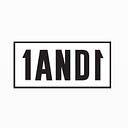How to Export Your Fitbit Data to Excel and Nail Your Fitness Goals
hey found that users could lower their resting heart rate with simple lifestyle changes like getting seven hours of sleep every night, regularly exercising, and maintaining a healthy body mass index (BMI).
Export Fitbit Data to Improve Sleep Habits
Fitbit released what could be the biggest dataset of its kind to further understand how Americans sleep. It looked at six billion nights of sleep data to reveal just how well users sleep in America. You can probably guess their conclusion: their analysis concluded we’re not getting enough sleep.
Although this a large scale use of Fitbit’s data, you can analyze your own sleep data. Your sleep quality and duration are integral to your overall health, and for hitting the performance levels you need. By looking at your sleep patterns and consistency, you can make changes to your sleep routine or even just cut out caffeine after midday. If you’re trying to up your sleep game, check out our 3 tips to crush sleep like a boss.
How to Use Your Google Fit Data
Whether you choose the Apple Watch or Fitbit, or the Wear smartwatch (formerly Android Wear), you’ve selected a good product — but your choice depends on what you hope to get out of this technology. Another way to stay on top of your fitness goals is to join the Google Fit ecosystem, pairing your smartphone or Wear smartwatch with Google Fit.
Google uses advanced sensors in your smartwatch and smartphone to figure out when you’re walking, jogging, running and more. Google Fit is supported by loads of third-party apps and devices so you don’t need to run out and buy a new Wear watch. Third-party apps include Nike+ Run Club, Calm, and Map My Fitness.
You can also map your workouts, pulling data from any wearables. It’s also possible to manually enter activities to keep a journal of your workouts. The Google Fit app widget on your phone home screen makes it easy to track your Move Minutes and Heart Points without having to go into the app. This feature of Google Fit is Android-only as Apple doesn’t support widgets.
Google Fit worked with the World Health Organization (WHO) to develop activity goals based on WHO’s recommendations for physical health. This is where Move Minutes and Heart Points come from. With Heart Points, you earn one point for every minute of moderate-intensity exercise. Google is all about data and Google Fit is no different; it pulls together data from several sources into one easy to understand dashboard.
Wellness Starts Today
Like all data, your fitness data is valuable. After you export your Fitbit data, you can use it to analyze your health and fitness in a way that can transform your overall well-being. If you can see that your sleep is inconsistent, you have the opportunity to do something about it. By making full use of fitness tracking technology like Fitbit or Google Fit, you have the ability to progress and meet your goals like never before.
Try Other Smart Devices
If you like the Fitbit, then you’ll love a smart scale. Try the FitTrack Dara scale or the Renpho scale. You can measure your weight and BMI, and you can track results on an app. On the other hand, if you’re not sold on the Fitbit, then have a look at other fitness trackers, like the Whoop Strap.
*This post may contain affiliate links to the products and services that we talk about.
